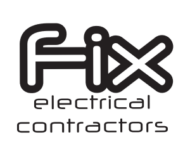Running a business means juggling countless responsibilities, but one area you can’t afford to overlook is your electrical infrastructure. Poor electrical maintenance doesn’t just risk equipment failure—it can shut down your entire operation, endanger your staff, and land you in serious legal trouble.
According to Energy Safe Victoria, electrical faults cause approximately 40% of commercial building fires in Australia. That’s not just a statistic—it represents millions of dollars in damage and, more importantly, preventable risks to workplace safety.
Our latest guide will walk you through everything you need to know about commercial electrical maintenance, providing practical checklists aligned with AS/NZS 3000, AS/NZS 3760:2022, and other relevant Australian standards.
Table of Contents
Why Commercial Electrical Maintenance Matters More Than You Think
Your electrical systems are the backbone of your business operations. When they’re working properly, you barely notice them. When they fail, the consequences can be devastating.
Recent studies have shown that businesses implementing regular preventive electrical maintenance programs experience a 67% reduction in electrical-related downtime and save an average of 30% on operational costs. More importantly, proactive maintenance helps you maintain compliance with Australian Work Health and Safety legislation—something that’s not optional for any business owner.
The real costs of neglecting electrical maintenance include:
Unexpected equipment failure that can disrupt business operations for days
Legal liability under Australian WHS legislation (penalties can reach $3 million for corporations)
Voided insurance claims due to inadequate maintenance records
Safety hazards that put your staff and customers at risk
Significantly higher operational costs due to inefficient electrical systems
Understanding Your Commercial Electrical Systems
Before diving into maintenance tasks, it’s important to understand what makes commercial electrical systems different from residential ones. Commercial electrical systems typically feature three-phase power distribution, sophisticated electrical panels, and higher-voltage equipment operating at 415V, compared to the standard 240V in homes.
Key components of commercial electrical systems include:
Three-phase distribution boards and electrical panels
Higher capacity circuit breakers and protective devices
Power factor correction equipment
Building management systems
Industrial-grade switchgear
Emergency backup systems and dedicated backup generators
These electrical components must support heavier loads, have built-in redundancy for critical life support systems, and include advanced safety features that comply with AS/NZS 3000 (the Australian/New Zealand Wiring Rules).

Essential Commercial Electrical Maintenance Checklist for Your Business
Monthly Electrical Maintenance Tasks
Visual Inspections of Electrical Panels and Switchboards
Conduct regular visual inspections of all electrical panels, looking for signs of overheating, damage, or moisture. Check that all covers and protective barriers are secure and that no unauthorised modifications have been made. Document any issues and schedule immediate repairs with a qualified electrician.
Ground Fault Circuit Interrupter (Safety Switch) Testing
Push-button test all RCDs (safety switches) monthly. This simple task takes just a few minutes but is crucial for electrical safety. If any safety switch fails to trip during testing, contact a licensed electrician immediately—this indicates a serious safety hazard.
Emergency Systems Check
Test alarm systems, emergency lighting, and other critical life support systems to ensure they’ll function when needed. This includes checking that fire alarms have power and that emergency lighting illuminates properly during simulation tests.
Quarterly Electrical Maintenance Tasks
Thermal Imaging Scans
Professional thermal imaging can detect potential electrical hazards before they cause equipment failure. These scans identify hotspots, loose connections, and overloaded circuits that aren’t visible during regular visual inspections. According to industry data, thermal imaging can identify up to 80% of electrical problems before they cause failure.
RCD Operational Testing (per AS/NZS 3760:2022)
Whilst monthly push-button tests can be done by staff, quarterly operational testing with specialised equipment should be performed by electrical and electronics engineers or qualified maintenance technicians. This comprehensive testing ensures your safety switches will actually protect your staff in an emergency.
Power Quality Monitoring
Check voltage fluctuations, harmonics, and power factor to ensure your electrical systems are operating efficiently. Poor power quality can damage sensitive equipment and increase maintenance costs significantly.
Annual Electrical Maintenance Tasks
Comprehensive Electrical Inspection
Schedule a thorough inspection with a licensed electrician to check all electrical connections, test circuit breakers, and verify that your electrical distribution systems meet current safety standards. This inspection should include:
Testing all protective devices to ensure they function correctly
Checking electrical connections for signs of wear or loosening
Verifying that earthing systems are intact and effective
Inspecting electrical outlets and powerpoints for damage
Testing emergency backup systems under load conditions
Equipment Testing and Maintenance
All electric equipment should be tested according to AS/NZS 3760:2022 standards. This includes testing portable equipment, checking electrical devices for proper functioning, and ensuring all electrical assets are operating safely.
Verification of MEN (Multiple Earthed Neutral) system and equipotential bonding
Check that the Multiple Earthed Neutral system is intact and that all equipotential bonding connections are secure and corrosion-free. This is critical for maintaining electrical safety in accordance with Section 5 of AS/NZS 3000.
Documentation Review
Update your electrical safety management plan and ensure all maintenance records are current. This documentation is crucial for maintaining compliance and can protect you legally if issues arise.
Preventive Maintenance Tasks for Optimal Performance
Cleaning and Component Care
Regular cleaning of electrical equipment prevents dust and debris from causing overheating. Clean electrical panels, distribution boards, and other electrical components according to manufacturer specifications. Replace any faulty electrical components before they cause system-wide problems.
Load Balancing Assessment
Unbalanced electrical loads can cause inefficient operation and premature equipment failure. Have a qualified electrician measure current on all phases and redistribute loads to achieve optimal balance.
Energy Efficiency Optimisation
Review your electrical systems for energy efficiency opportunities. Upgrading to LED lighting, optimising power factor correction, and ensuring HVAC electrical systems operate efficiently can significantly reduce operational costs.
Ready to implement a comprehensive maintenance program? Fix Electrical Contractors can help you develop and execute a customised maintenance checklist that meets all Australian standards. Our experienced team has been providing exceptional electrical maintenance services across Penrith, Blacktown and the Blue Mountains for over 15 years.

Preventing Electrical Failures: Advanced Maintenance Strategies
Implementing Preventive Maintenance Software
Modern preventive maintenance software can help you track maintenance schedules, document inspections and maintenance activities, and ensure nothing falls through the cracks. These systems can automatically remind you when maintenance tasks are due and help you maintain the detailed records required by Australian regulations.
Training Your Maintenance Team
Whilst licensed electricians must perform most electrical work, training your maintenance technicians to recognise potential electrical hazards can prevent many problems. Staff should know how to:
Identify signs of faulty wiring or damaged electrical connections
Recognise when electrical equipment is operating outside normal parameters
Perform basic visual inspections safely
Know when to immediately contact a qualified electrician
Developing an Effective Electrical Maintenance Plan
Your electrical preventive maintenance checklist should be tailored to your specific business needs. Consider factors such as:
The age and condition of your electrical infrastructure
Environmental conditions that might accelerate wear
Critical systems that cannot afford unexpected downtime
Regulatory requirements specific to your industry
Budget constraints and the need to balance preventive vs reactive maintenance
Common Electrical Maintenance Challenges and Solutions
Dealing with Aging Electrical Infrastructure
Many commercial buildings have aging electrical systems that require more frequent maintenance. Signs your electrical infrastructure may need upgrading include:
Frequent circuit breaker trips
Flickering lights or voltage fluctuations
Burning smells near electrical panels
Warm electrical outlets or switches
Insufficient power capacity for modern equipment
Managing Maintenance Costs Effectively
Whilst preventive maintenance requires upfront investment, it’s far more cost-effective than reactive maintenance and emergency repairs. Studies show that preventive maintenance typically costs 12-18% of reactive maintenance when you factor in downtime costs and emergency service fees.
Ensuring Workplace Safety During Maintenance
All electrical maintenance activities must prioritise workplace safety. This means:
Using proper lockout/tagout procedures
Ensuring maintenance technicians have appropriate training and equipment
Never attempting electrical work beyond your team’s qualifications
Always engaging licensed electricians for complex electrical work
Legal Requirements and Compliance in Australia
As a business owner, you have specific legal obligations regarding electrical safety under Australian Work Health and Safety legislation. These include:
Ensuring all electrical equipment complies with AS/NZS 3000
Implementing regular testing and inspection programs
Maintaining detailed records of all electrical work and inspections
Providing a safe workplace with appropriate electrical safety controls
Engaging licensed electricians for all electrical installation and repair work
Failure to meet these obligations can result in significant penalties, with fines reaching up to $3 million for corporations in serious cases of non-compliance.
Creating Your Customised Maintenance Schedule
Assessing Your Current Electrical Systems
Start by conducting a comprehensive assessment of your electrical systems and equipment. This should include:
Documenting all electrical assets and their current condition
Identifying immediate safety concerns
Evaluating compliance with current Australian standards
Establishing maintenance priorities based on risk assessment
Determining Appropriate Maintenance Intervals
Your maintenance schedule should strike a balance between regulatory requirements, manufacturer recommendations, and your specific operating conditions. High-use equipment or systems in harsh environments may need more frequent attention than equipment in clean, controlled conditions.
Budget Planning for Electrical Maintenance
Effective maintenance budgeting allocates approximately 70-80% to preventive maintenance activities, with the remainder reserved for unexpected reactive maintenance. Consider the true cost of downtime when evaluating maintenance investments—the most expensive maintenance is often the maintenance you don’t do.
Key Takeaways
- 1. Regular maintenance prevents catastrophic failures and saves money.
- Australian Work Health and Safety legislation requires businesses to maintain electrical systems properly. Non-compliance can result in fines up to $3 million for corporations, plus potential legal liability for accidents.
- Follow a structured maintenance schedule: The guide outlines specific tasks: monthly visual inspections and safety switch testing, quarterly thermal imaging and RCD testing, and annual comprehensive inspections by licensed electricians.
- Electrical faults are a major fire risk.
- While some basic tasks can be performed by trained staff, complex electrical work must be done by licensed electricians to ensure safety and compliance with AS/NZS standards.
Protect Your Business with Professional Electrical Maintenance – Contact Fix Electrical Today!
Regular electrical maintenance isn’t just about preventing equipment failure—it’s about protecting your business, your staff, and your customers.
The key to effective electrical maintenance is consistency. Establish clear maintenance schedules, maintain detailed records, and never compromise on safety standards. When in doubt, always consult with licensed electrical contractors.
Contact Fix Electrical Contractors today or call us on (02) 4703 4622 for your free consultation and discover how professional electrical maintenance can protect your business investment while reducing long-term operational costs.

Adrian Faull
Adrian Faull is the founder of Fix Electrical Contractors. He is proud to lead a team of qualified electricians and support team that are experts in the field, who will work with you to ensure you’re getting the best electrical solution for your needs.

Adrian Faull
Adrian Faull is the founder of Fix Electrical Contractors. He is proud to lead a team of qualified electricians and support team that are experts in the field, who will work with you to ensure you’re getting the best electrical solution for your needs.
